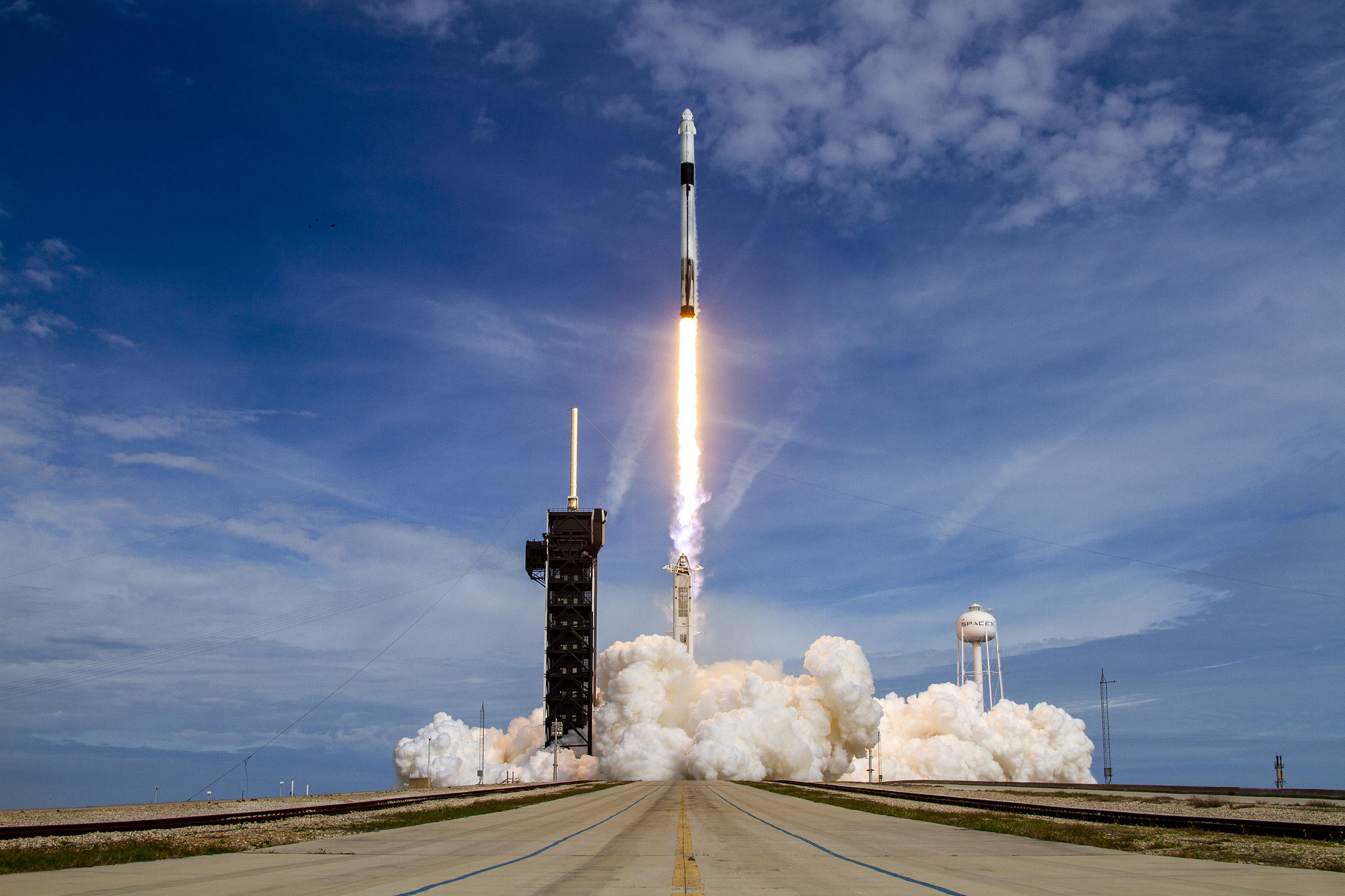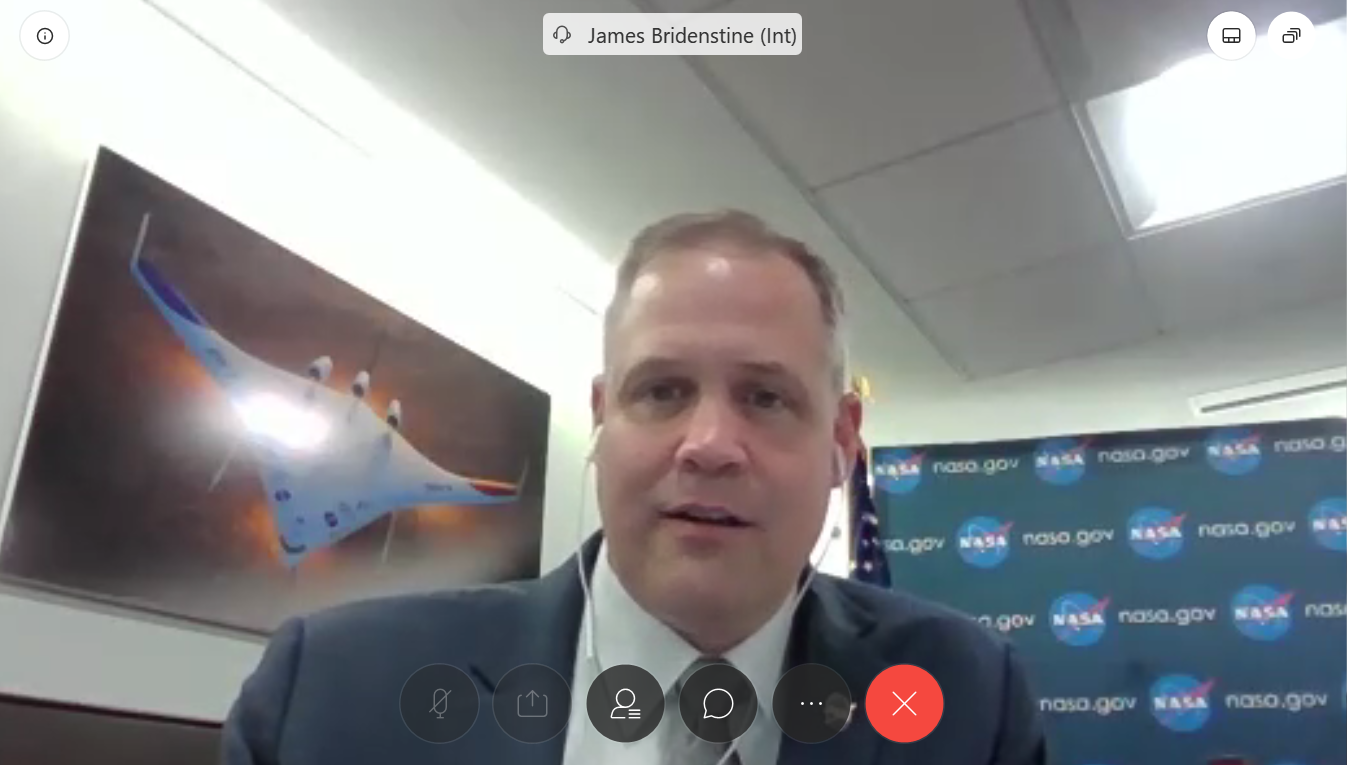NASA chief to space fans: Don't travel to Florida to watch SpaceX's 1st astronaut launch
"We are asking people to join us in this launch, but to do so from home."

As NASAtackles the coronavirus pandemic with the rest of the nation, NASA administrator Jim Bridenstine urges and warns space enthusiasts to stay home next month during SpaceX's historic first astronaut launch.
NASA administrator Jim Bridenstine and other agency leaders made the public plea Thursday (April 23) during an hour-long video conference on the agency's response to COVID-19, the disease caused by the novel coronavirus. Bridenstine spoke candidly about the SpaceX's upcoming Crew Dragon Demo-2 launch, which will be NASA's first mission to launch astronauts into space from U.S. soil since the agency's space shuttle program ended in 2011.
"Yes, we are moving forward [with Demo-2]," Bridenstine said. "We are very excited about launching commercial crew." The mission , he added, will restore NASA's access to the International Space Station aboard American spacecraft, which "is a mission-essential function."
But, Bridenstine said, the crowds of space fans that normally turn out for such a launch should stay at home due to social distancing concerns related to the coronavirus.
"We are asking people to join us in this launch, but to do so from home. We're asking people not to travel to the Kennedy Space Center."
Related: Coronavirus pandemic and spaceflight: Complete coverage
"We're trying to make sure we have access to the International Space Station without drawing the massive amount of crowds that we usually would," Bridenstine added.
SpaceX is one of two companies (Boeing is the other) with multi-billion-dollar NASA contracts to launch astronauts to the space station on a commercial spacecraft. Both companies flew uncrewed test flights in 2019, but SpaceX is the first to launch American astronauts into orbit on an U.S.-built rocket from U.S. soil since the shuttles retired. The Demo-2 mission will launch NASA astronauts Bob Behnken and Doug Hurley to the station.
Breaking space news, the latest updates on rocket launches, skywatching events and more!
With such an historic spaceflight, Bridenstine said NASA expects crowds would be even larger than an average launch if there was no pandemic underway. But despite that excitement, Bridenstine stressed that people should "watch from a place that's not the Kennedy Space Center."
The space center will actually be closed to the public during the launch, so typical viewing tickets won't be available, Bridenstine said. Local and state authorities will have to take their own measures for the spectators that flock to nearby public roads and beaches for a launch, he added.
NASA is also taking precautions with its own workforce.
The agency is at "Stage 4" of its "response framework." This means that all agency facilities are completely shut down and all personnel are working remotely with the exception of mission-critical personnel whose work protects lives or is critical to maintain infrastructure. NASA employees are even controlling NASA's Curiosity Mars rover from home right now.
In addition to those measures, Bridenstine said, any NASA employees who feel uncomfortable working on the project can request to be reassigned to another position or role that can be done home with absolutely no retribution. However, he added, very few have requested reassignment as "this is a very exciting project and the NASA workforce is very excited about it."
Perservering at NASA
With these measures in place to prevent the spread of the novel coronavirus, NASA is continuing to make progress both in science and spaceflight missions, as well as with technology developments designed explicitly to fight the disease.
While NASA has had to put some science missions on hold, Bridenstine said, the agency is still doing science with data collected by probes already in space and is still planning to launch the Mars Perseverance rover in July.
"We are, in fact, persevering and we're going to launch this robot to Mars," Bridenstine said in response to a Space.com question during Thursday's briefing.
"We are very proud of staying on schedule," added David Gallagher, the associate director for strategic integration at NASA's Jet Propulsion Laboratory. Putting the robot in storage would be extremely expensive and they want to avoid putting off the mission, he said.
Tackling coronavirus head-on
In addition to shifting mission timelines and working to ensure the safety of their staff, NASA is also working to develop technologies to be used to treat COVID-19 patients.
NASA engineers have stepped up to the plate and developed a unique COVID-19 specific ventilator that uses one-seventh the parts of a multi-purpose ventilator that would typically be used in an intensive care unit, NASA's Chief Health and Medical Officer Dr. J.D. Polk shared during the briefing. They are additionally developing a CPAP (or Continuous positive airway pressure) hood to treat patients who do not yet need ventilators, Mike Buttigieg, an engineer at NASA's Armstrong Flight Research Center, who is working on the new hood, added.
Both of these novel technologies have been submitted to the FDA for emergency use authorization so that they can pass more quickly through testing and get to patients in need faster, NASA officials said.
- NASA satellite sees air pollution drop over US amid coronavirus outbreak
- Watching coronavirus outbreak from space a 'surreal' experience, astronauts say
- 'Going back to a different planet': Astronauts will return to Earth soon
Follow Chelsea Gohd on Twitter @chelsea_gohd. Follow us on Twitter @Spacedotcom and on Facebook.
OFFER: Save 45% on 'All About Space' 'How it Works' and 'All About History'!
For a limited time, you can take out a digital subscription to any of our best-selling science magazines for just $2.38 per month, or 45% off the standard price for the first three months.

Chelsea “Foxanne” Gohd joined Space.com in 2018 and is now a Senior Writer, writing about everything from climate change to planetary science and human spaceflight in both articles and on-camera in videos. With a degree in Public Health and biological sciences, Chelsea has written and worked for institutions including the American Museum of Natural History, Scientific American, Discover Magazine Blog, Astronomy Magazine and Live Science. When not writing, editing or filming something space-y, Chelsea "Foxanne" Gohd is writing music and performing as Foxanne, even launching a song to space in 2021 with Inspiration4. You can follow her on Twitter @chelsea_gohd and @foxannemusic.


